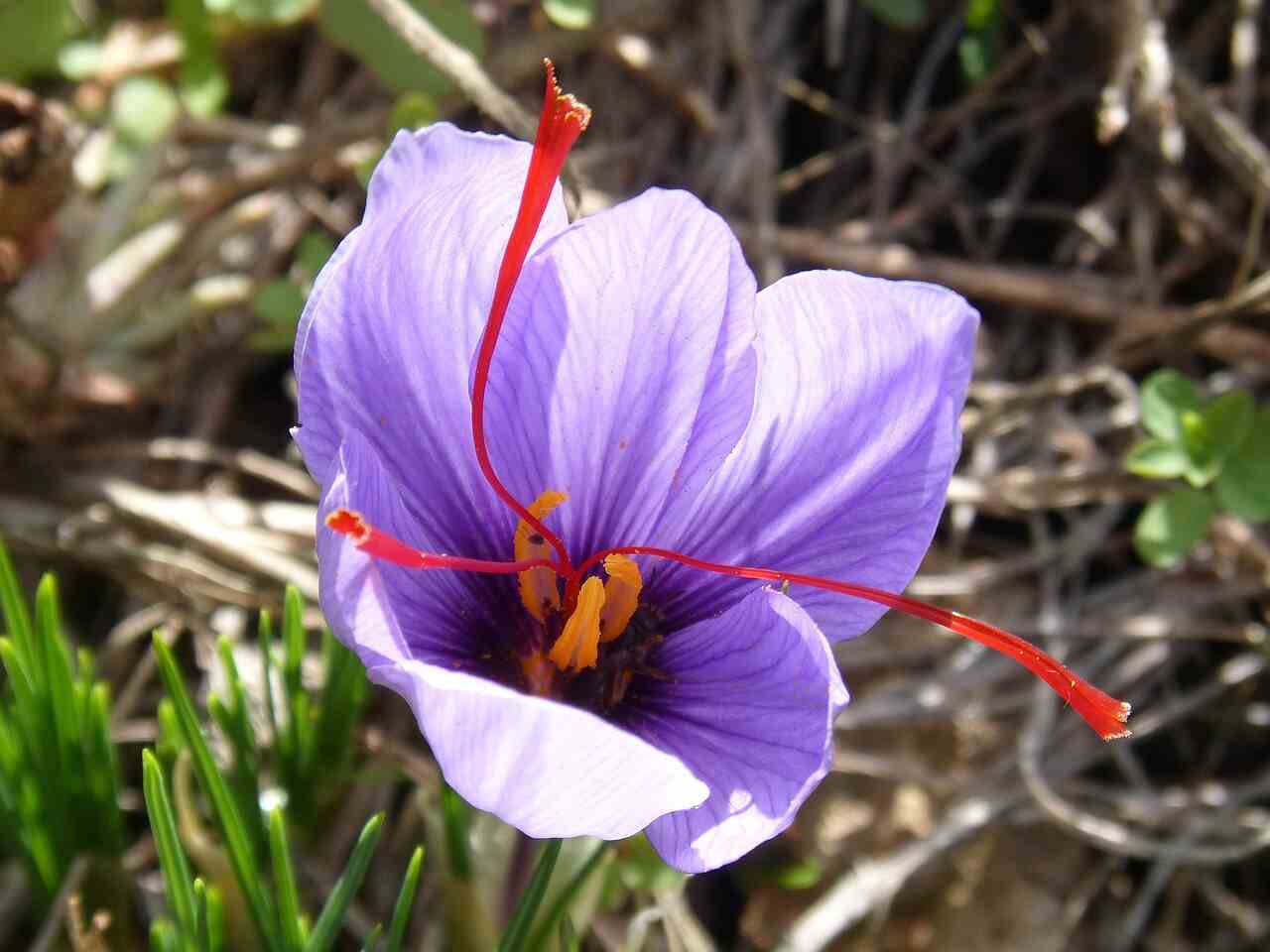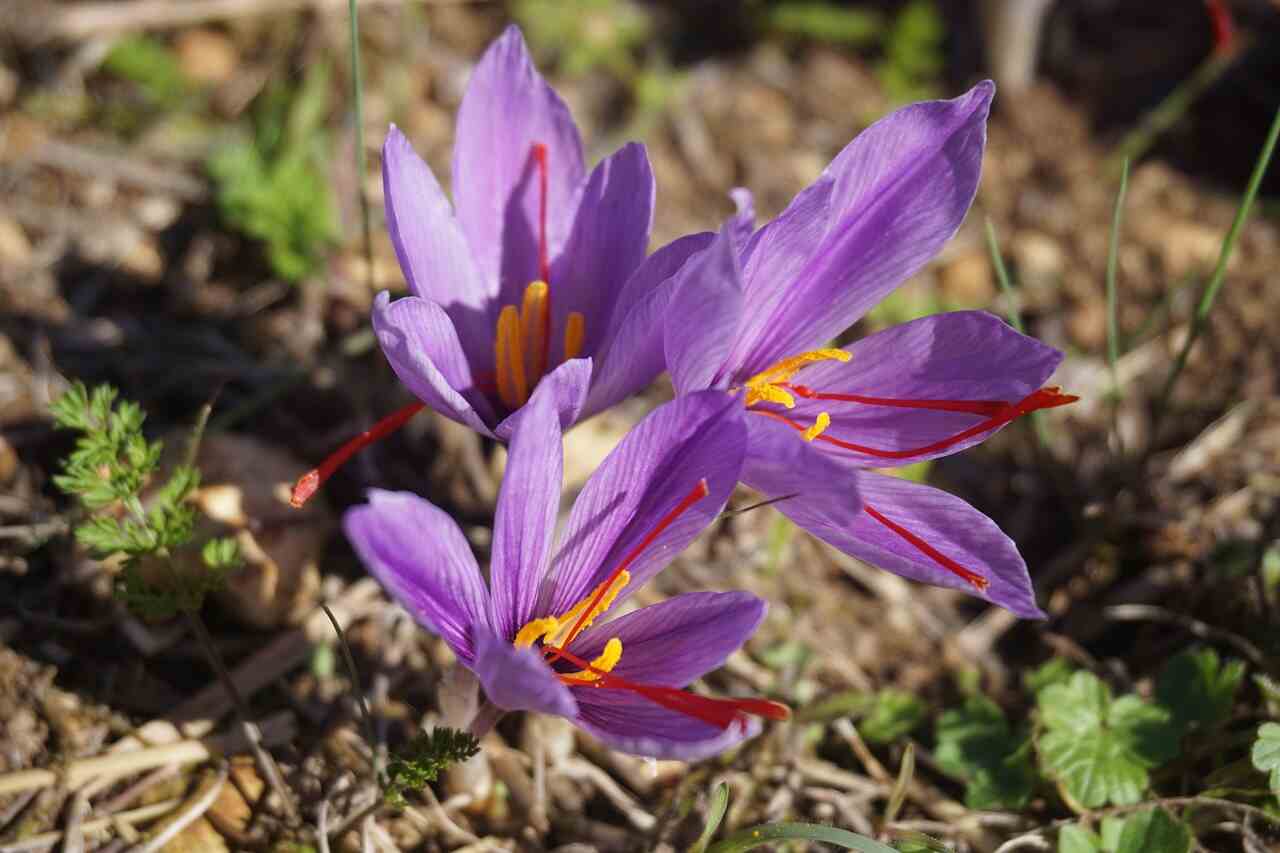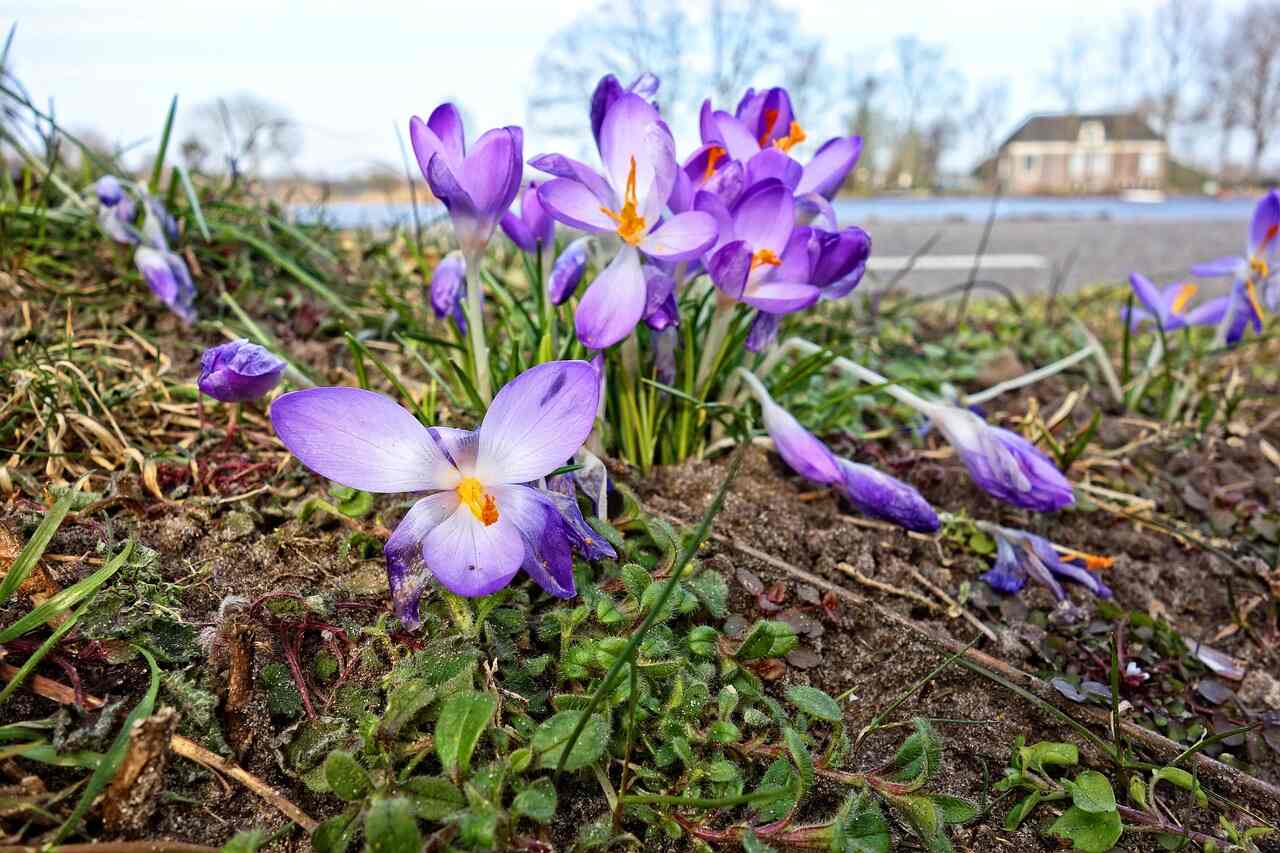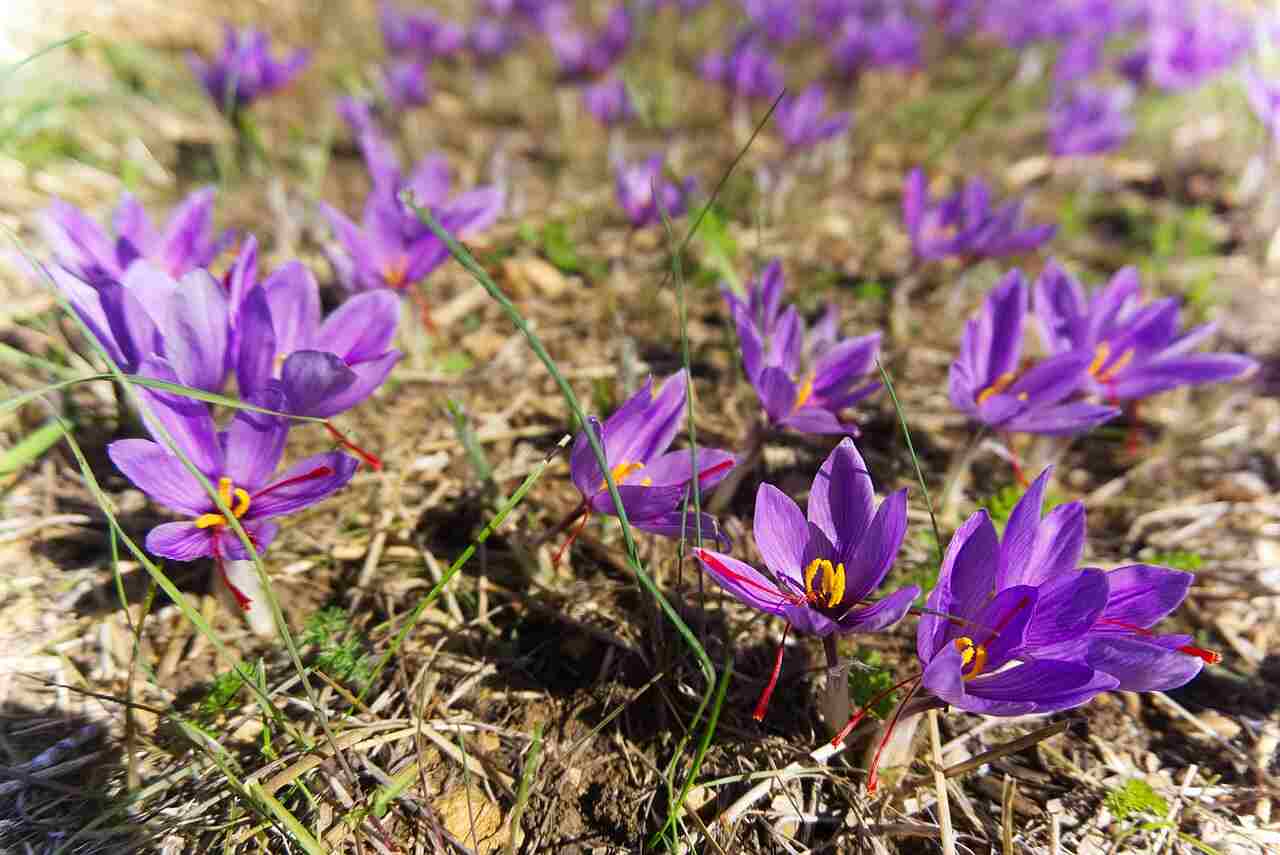Saffron is delicate to gather because it comes from the smirch of the crocus flower, and each flower only produces a small quantity of saffron.
It takes a large number of flowers to produce a significant volume of saffron, making the harvesting process labor- ferocious and time consuming.
These factors contribute to the high cost and limited vacuity of saffron. In this composition we will ask why is saffron hard to grow?

Where Is Saffron Grown?
Saffron is grown in limited amounts in Afghanistan, New Zealand and Mexico but Iran is the world’s largest patron and exporter of this spice. Because Iran isn’t a member of the World Trade Organization( WTO), it’s suitable to vend saffron at lower prices to other nations. Its rich soil and cold climate make it an ideal growing region for saffron.
In Afghanistan, DACAAR is an illustration of a non-governmental association that’s working to train women in the field of saffron husbandry. It has trained 120 women in the region to crop saffron. The association pays them 250 Afs($ 5) for each day that they work. The growth of the cosmetics assiduity and a growing global population is anticipated to only increase the demand for saffron.
Why is Saffron Hard to Grow?
This ancient spice is hard to grow and must be precisely gathered in order to reap its benefits. Saffron grows substantially in Iran and the Mediterranean region, and is a member of the lily family. It has long, thin leaves and grows grandiloquent flowers containing three spots. It’s gathered by hand and has a distinctive flavor that has been a constant fave in food and potables around the world for eons.
In addition to its culinary uses, saffron has medicinal and ornamental parcels and is a great source of antioxidants. It’s an important anti-inflammatory and may indeed help with nervous system diseases. numerous people drink saffron tea as a means of relieving depression, easing anxiety, and boosting heart health.
One of the reasons saffron is so precious is the delicate process of harvesting the saffron flower. The bitsy spots on each flower must be manually separated from the flower in order to gather the saffron.
The labor- ferocious process of harvesting involves the spots being hand- plucked and dried before they’re vended. Each flower has only a many weeks of blooming time, and it’s essential to pick them as soon as they begin to wilt. This limits its force, making the spice incredibly precious, and commodity of a luxury.
It takes 70,000 to 250,000 points from a crocus sativus plant to produce a gram of saffron. It is a labor intensive process and the average worker can only process about 80 grams per day. It’s also important to note that the flower must be picked beforehand in the morning, since the spots will lose their sweet quality if they’re left in the factory for too long.

Propagation of Saffron Corms:
Saffron manly seed is sterile so it’s propagated vegetatively using corms. Flower yield is largely dependent on corm size and viscosity but lack of vacuity and diversity of factory material presents a major constraint for large scale CEA saffron products. A large corm above 8 grams produces three to four small son corms, which take 2 to 3 seasons( in the field a season is one timetable time but in CEA there’s eventuality for four crops annually)
to achieve the size and weight for flowering. Forcing the bulbs through regular dormancy ages via CEA may help to promote cosmogenesis.
How Can You Saffron In The USA Naturally?
How to grow saffron. Saffron is acclimated to thirsty regions and has an periodic life cycle, but it’s generally cultivated as a imperishable crop by controlling corm bulb growth for the ensuing time.
It’s a sterile triploid geophyte and is fairly slow to replicate through son corms each time. In the field, corms that die back after unfolding and surprisingly have no cold demand to break their dormancy.
They can be lifted from the field during this time and stored in a dry chalet before planting out again in spring, although they’re hardy and can repel low soil temperatures.
History of Saffron:
The Arabic word for spice, zafaran, is its name andquot; saffron” Derived from Other names for saffron include safran, derived from Middle English safroun and Middle Latin safranum. Its scientific name, Crocus Sativus, is taken from an obscure Greek myth about the love of the man Crocus for the beautiful nymph Smilax, whom he transforms into the most beautiful crocus flower.

Issues that Affect Unborn Stability of Growing Saffron
The negative impacts of climate change and global warming on saffron flower induction may change how saffron is farmed. These crops will start to appear in better-defended geographic areas as the global north warms and intense rainfall events increase in frequency.
Wars and poverty also play a part in husbandry and insecurity in the region could lead to reduced world vacuity.
Health Benefits of Saffron:
Saffron is an important spice that has many health benefits. It can prevent the formation of toxic amyloid structures and improve brain function.
One study found that saffron helped improve cognitive function in Alzheimer’s disease. In addition, it prevented the accumulation of beta-amyloid, which is one of the causes of the complaint. The spice is often sold as 30 mg supplements.
Studies have set up that saffron also has anti-inflammatory parcels and may reduce the threat of heart conditions. Its antioxidant parcels help lower blood cholesterol and help blood vessels from getting congested.
It can also increase insulin sensitivity and lower blood sugar. Some other exploration shows correlation between saffron operation and better sight in grown-ups with age- related macular degeneration.
It may also help ameliorate memory and cover the brain from free radical damage. Saffron is also good for our skin. It progresses the appearance of skin and may diminish side effects of premenstrual disorder and menstrual issues.
In rats, saffron has been demonstrated to lessen the discomfort brought on by nerve injury. It moreover moved forward indications of morphine withdrawal in mice.. Such studies suggest that saffron may also have antidepressant properties.
Moreover, saffron increases the activity of the beta-2 receptors and inhibits histamine 1 receptors. According to laboratory experiments, saffron may be useful in shielding the liver from the damaging effects of medicines.
Know These Things About Saffron!
Farmers who grow saffron flower say that “just three petals of saffron can give saffron color to 100 liters of milk or water”. That means saffron is also a good natural color. Many cloths in the market are dyed with saffron, which rich people buy and wear with great care. These clothes dyed with saffron are also very expensive. Once saffron seeds are planted in the field, they last for 15 years.

Disadvantages of Saffron:
As I said earlier, if we eat anything more than required then it harms us. That the same thing happens with saffron. The biggest disadvantage of eating too much saffron is that it will make your pocket loose because saffron is very expensive.
● If you are a heart patient then why should you not do sir.
● Most of the saffron skin turns yellow.
● Pregnant women are requested to consult a doctor before taking saffron.
Conclusion : Why is Saffron Hard To Grow
So through this article I hope you’ve understood the reason for the question: why is saffron hard to grow? Saffron requires well-drained soil with a pH of six to eight for proper growth. For growing spices at home Sandy, gravelly and loamy soil is perfect. Just avoid planting it in clay soil. Saffron takes very little maintenance until harvest time; some growers even automate the process, saving labor costs because restaurants may select the flowers directly off the plant without any further processing, and to the chef’s plate.
Related articles:


